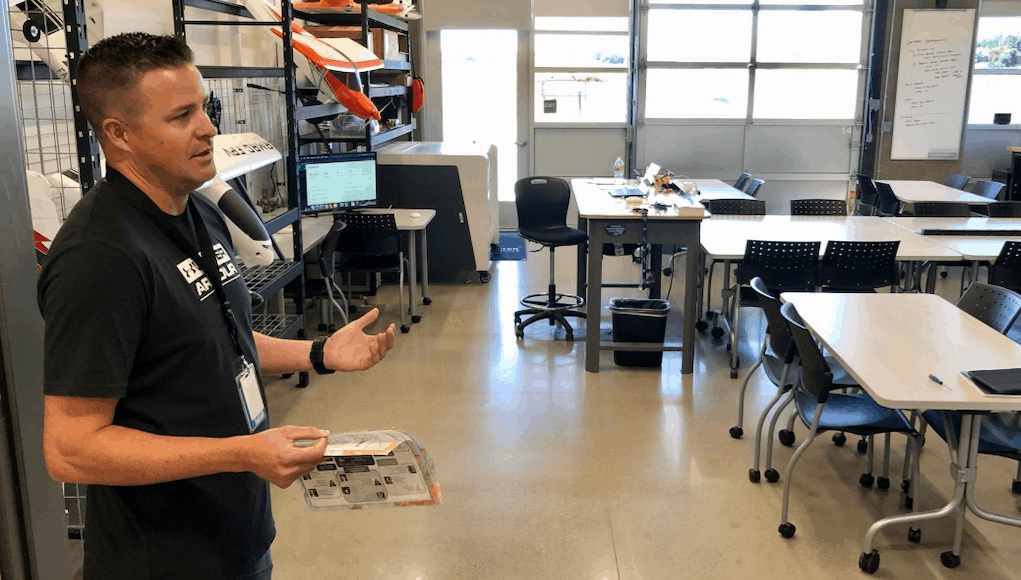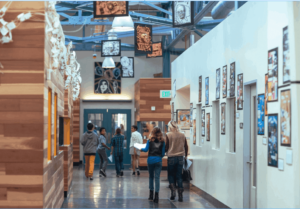What is 21st Century Learning? How Do We Get More?

We’re living in an extraordinary century:
- Almost six in ten of the nearly 8 billion of us on Earth are connected to the internet; adding the next 4 billion people to the internet is the biggest learning opportunity in history.
- In the last two decades, we became a planet of cities. About 55% of the world’s population lives in cities and by mid-century—when there are 10 billion of us—it will be more than two thirds, so we’ll need to invent ways to make cities workable, livable, and sustainable.
- Extreme poverty was reduced from more than a third to less than 10%, with a shot at eradicating extreme poverty by 2030—there is enough wealth if there is enough will.
- Around mid-century, there is a pretty good chance that there will be super intelligent computers (often called artificial general intelligence) that will help solve our most vexing problems—and pose several existential risks.
- It will be the hottest century on record, and the last century during which there is a chance to do something about it.
What kind of education would prepare young people for this amazing and terrifying period of history? For 40 years, we’ve been talking about the aims and strategies of 21st century learning. Now that we’re a couple of decades in, we have a pretty good view.
What Is 21st Century Learning?
“All students have an educational experience preparing them to be effective lifelong learners and contributors.” That’s how Battelle for Kids thinks about 21st century learning. They encourage communities to develop a Portrait of a Graduate embracing key skills including critical thinking, communication, collaboration, and creativity that young people need to thrive in this complex rapidly changing world.
Holding community conversations about what is happening, what it means, and how to prepare creates a shared sense of urgency and what Battelle calls “a North Star for system transformation.”
What Does 21st Century Learning Look Like?
Learning for the 21st century is both personal and personalized. It is purposeful and honors learner variability. It combines skill sprints and extended challenges. It combines learner voice and choice with thoughtful guidance to shape learning journeys.
As Ron Berger recently said, learners, do their best work when 1) there is a culture of respect and belonging, where students can be their true selves, 2) where work is meaningful and will impact the world, 3) where professionals provide expert critique and guidance, and 4) where there is a genuine audience.
With the community as a classroom, 21st century learning happens anywhere, anytime. It addresses complexity with design thinking and embraces an entrepreneurial mindset in an effort to spot opportunity and deliver value.
Why 21st Century Learning?
The best preparation for a complex and rapidly changing future is learning to make a contribution today. Extended community-connected challenges build agency, design thinking and entrepreneurial mindset.
Well-resourced students often have access to powerful learning experiences. Equity demands that all young people have access.
In addition to being vital for individual learners, 21st century learning builds vibrant communities.
The ecosystems that skill-up will win in the innovation economy.
And given the pressing issues of our time, it’s critical that we mobilize the ingenuity of our youth to meet society’s growing challenges.
Progress Toward 21st Century Learning
There are many signs of progress: new schools have been formed, schools are being transformed, districts and communities are embracing 21st century learning.
About 5,000 new schools have been formed around new learning goals. At least that many existing schools are being transformed around 21st century goals. Many of these new and transformed schools belong to networks that share goals, tools, and strategies.
As part of Future Ready Schools, more than 3,400 school districts representing 20 million learners have pledged a commitment to innovative learning practices.
Hundreds of communities have updated their learning goals, leading to a deeper understanding of the desired skills and characteristics
Accelerating 21st Century Learning
There are four ways to expand access to 21st century learning to help more young people thrive—both now and as adults.
- More projects: integrated, community-connected projects with valuable products;
- More leadership: opportunities to serve and make a difference;
- More work-based learning: job shadows, client projects, internships and accelerated pathways to high wage employment; and
- More guidance: sustained adult relationships that guide learning journeys and expand opportunities.
21st Century Policy
The two-decade fixation with grade-level proficiency in math and reading as measured by end-of-year standardized tests locked in traditional grade-level structures encouraged whole group (rather than personalized) learning, and reduced extended community-connected learning experiences.
Like Virginia and South Carolina, states should adopt a high-level portrait of a graduate, and encourage school districts and networks to develop outcomes frameworks that value leadership and problem-solving.
States can address the fixation on grade level proficiency by reducing (and eventually eliminating) standardized testing. They can accomplish this by asking districts and networks to demonstrate how students are growing and achieving.
States also can create incentives for new school development (the way Texas and Ohio did) and support innovation zones, where schools have the flexibility to develop 21st century school models.
Now that we’re nearly 20 years into this new century and a couple of years into the AI-driven innovation economy, it’s time for all youth worldwide to have access to leadership opportunities and community-connected challenges. It’s the best chance we have of enabling them to contribute to a vibrant planet that they can leave for their kids.
For more, see:
- What Should Graduates Know and Be Able to Do?
- Mapping 21st-Century Skills to SEL Competencies
- Future Trend: Designing Schools for How Humans Learn
Stay in-the-know with innovations in learning by signing up for the weekly Smart Update.
This post was originally published on Forbes.







0 Comments
Leave a Comment
Your email address will not be published. All fields are required.